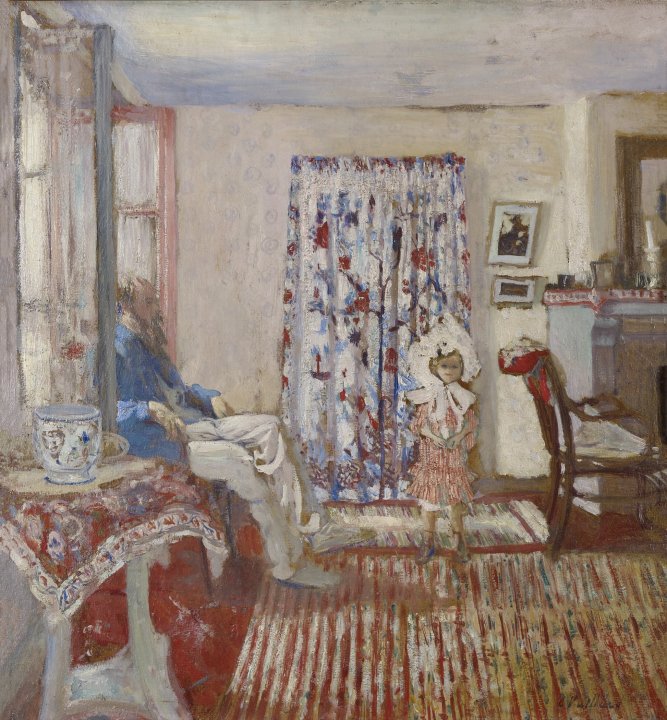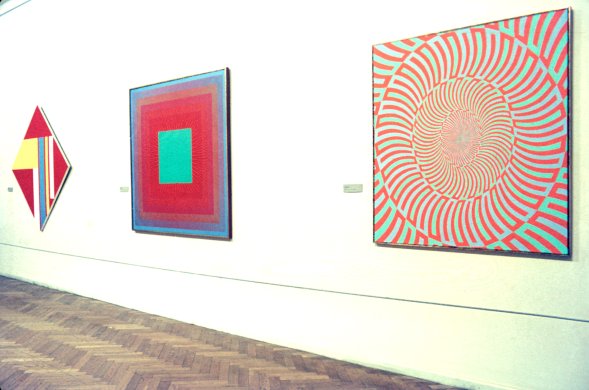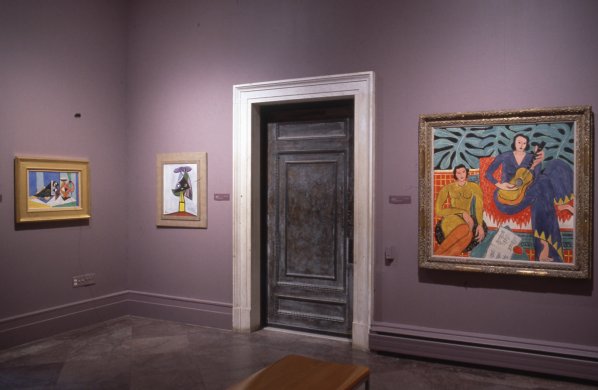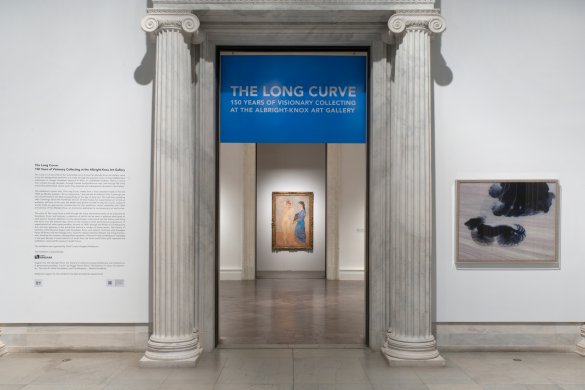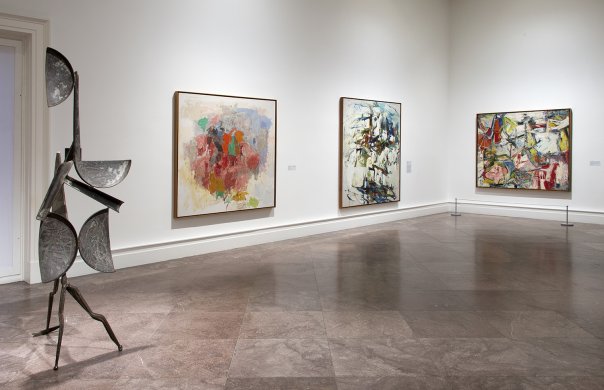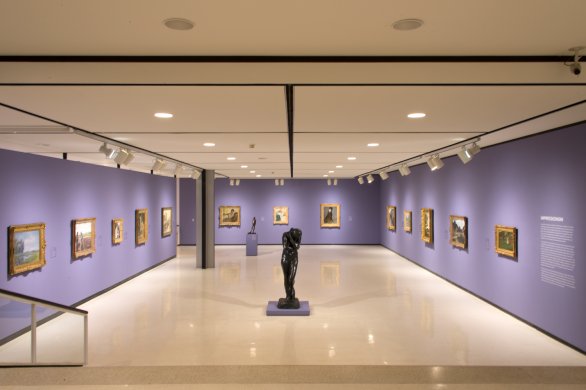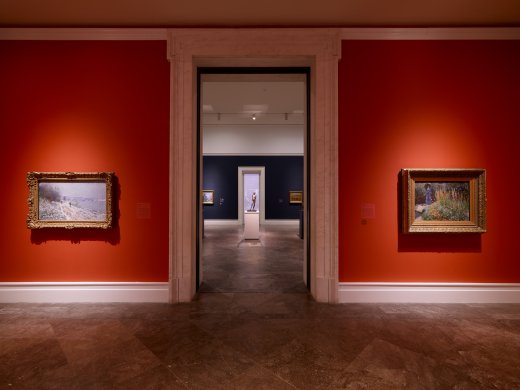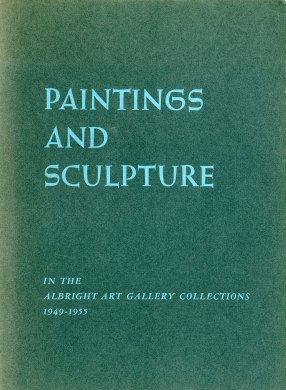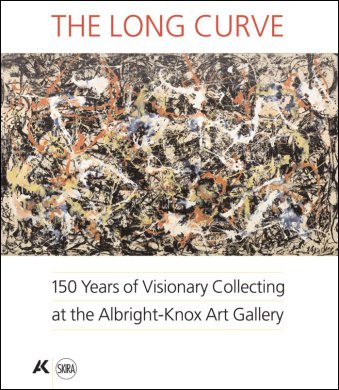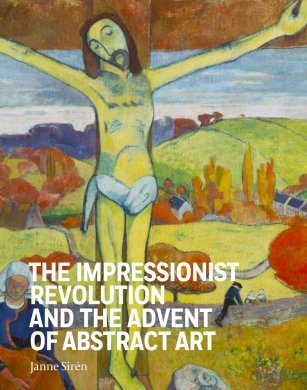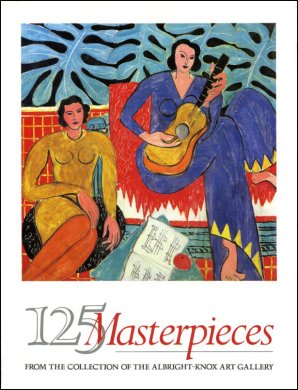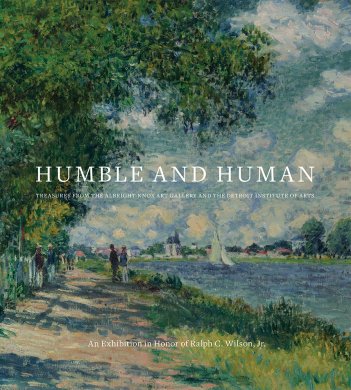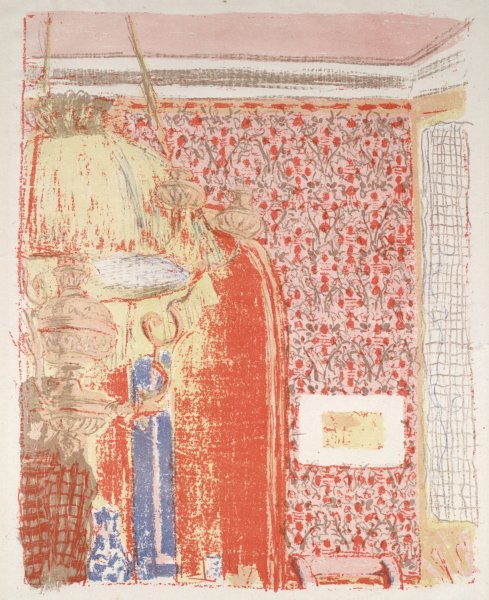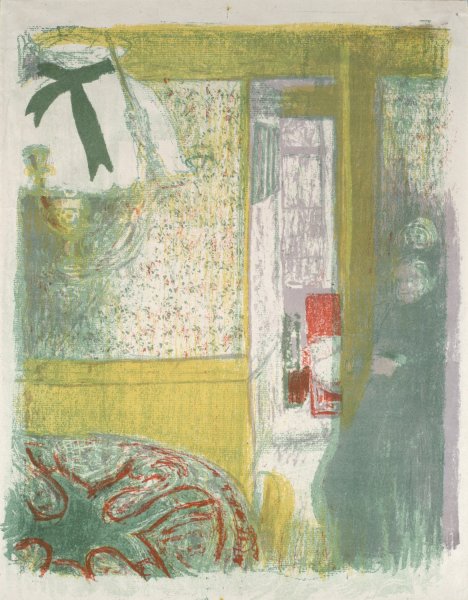Edouard Vuillard
French, 1868-1940
Le Peintre Ker-Xavier Roussel et sa fille (The Painter Ker-Xavier Roussel and His Daughter), 1903
Artwork Details
Currently on View
Collection Highlight
Materials
oil on cardboard
Measurements
support: 22 7/8 x 21 7/16 inches (58.1 x 54.45 cm); framed: 30 1/2 x 28 7/8 x 3 inches (77.47 x 73.34 x 7.62 cm)
Collection Buffalo AKG Art Museum
Credit
Room of Contemporary Art Fund, 1943
Accession ID
RCA1943:17
Édouard Vuillard and Ker-Xavier Roussel were both members of the post-Impressionist group Le Nabis. Spearheaded by artist Paul Sérusier (French, 1864–1927), who sought to spread his own interpretation of Symbolism after visiting Paul Gauguin in 1888, the group aimed to free painting by embracing the decorative qualities of color and form. The group’s name, taken from the Hebrew word “Nabi,” meaning “prophet,” also echoes their desire to express spiritual truths through dreamlike subjects. Unlike other members of the group, however, Vuillard avoided the fantastical. Instead, he chose to paint the familiar, stating, “I don’t paint portraits. I paint people at home.” The varied patterns depicted in this sunlit interior are balanced by Vuillard’s cautious placement of the figures and furniture. Rather than executing a more detailed rendering of his subjects, Vuillard believed that the mere suggestion of an object or situation could produce a far more powerful impression. Thus summarized in precise brushstrokes, Roussel and his daughter, Annette, do not stand out in this composition; they are simply another part of the room and its décor.
